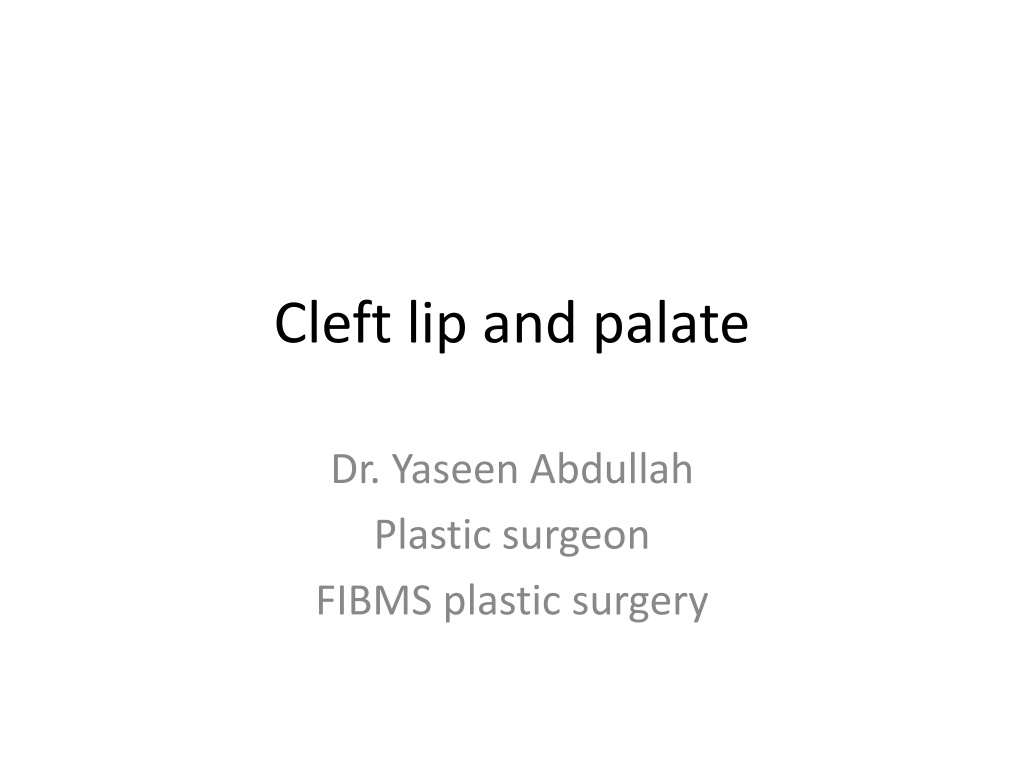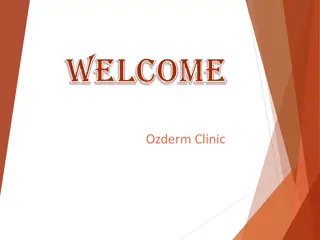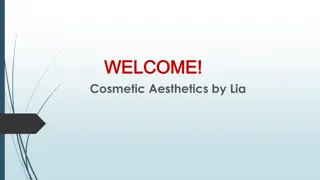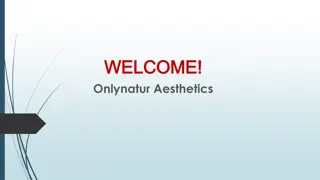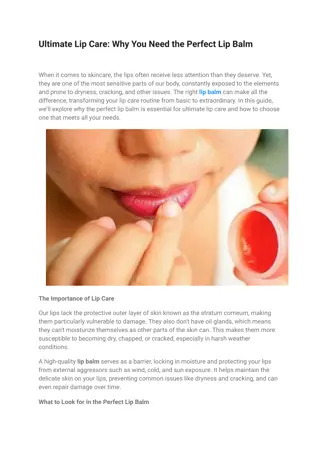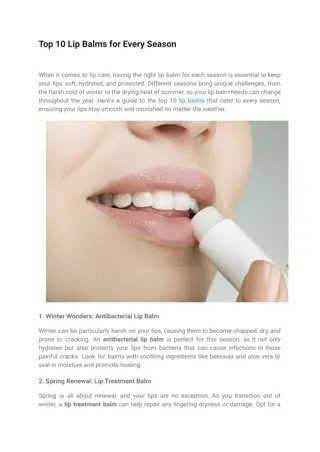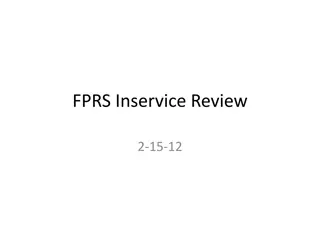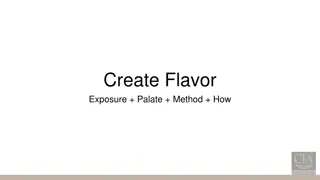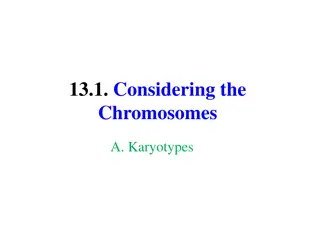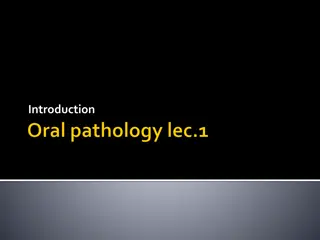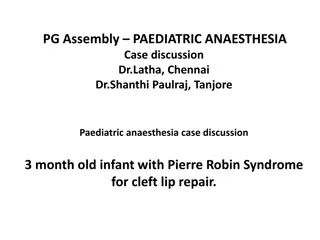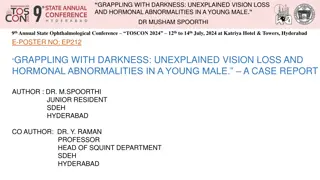Cleft Lip and Palate Abnormalities
Cleft lip and palate are developmental abnormalities of the face, mouth, and jaws. Learn about the classification, incidence, aetiology, and surgical timing. Explore the genetic and environmental factors, along with syndromes associated with cleft conditions. Understand Pierre Robin sequence, the classification of cleft lip and palate, and different types such as unilateral, bilateral, and complete.
Download Presentation

Please find below an Image/Link to download the presentation.
The content on the website is provided AS IS for your information and personal use only. It may not be sold, licensed, or shared on other websites without obtaining consent from the author.If you encounter any issues during the download, it is possible that the publisher has removed the file from their server.
You are allowed to download the files provided on this website for personal or commercial use, subject to the condition that they are used lawfully. All files are the property of their respective owners.
The content on the website is provided AS IS for your information and personal use only. It may not be sold, licensed, or shared on other websites without obtaining consent from the author.
E N D
Presentation Transcript
Cleft lip and palate Dr. Yaseen Abdullah Plastic surgeon FIBMS plastic surgery
Learning objectives To understand: The aetiology of developmental abnormalities of the face, mouth and jaws The Classification of cleft lip and palate The timing of surgery of cleft lip and palate
CL:isolated cleft lip CP: isolated cleft palate CLP:cleft lip and palate
incidence Cleft lip and palate 1:1600 live births Isolated cleft palate 1:1000 live births CLP more common in oriental groups than black CLP>CP>CL CLP more in male / CP more in female CL more in left side
Aetiology Both genetic and environmental Family history Syndromes (esp. CP) Maternal epilepsy Drugs: steroid ,diazepam and phenytoin Antenatal folic acid supplementation may prevent CLP
Pierre robin sequence Retrognathia Glossoptosis: posteriorly displaced tongue Cleft palate
Classification of cleft lip Unilateral or bilateral Complete(the nose is involved) or incomplete
Classification of CP Unilateral or bilateral Hard and soft or soft palate Bilateral complete cleft palate occurs when the nasal septum and vomer are separated from the palatine process
feeding isolated CL can take breastfeeding CP may have difficult suction and may need Modified teats Enlarging the hole of the teat
Airway problem Prone position Nasopharyngeal tube Tongue lip adhesion
Timing of surgery CL 3-6 months- Millard rotation advancement flaps CP 6-18 months
complications Hearing Recurrent otitis media Sensory neural hearing loss Speech problems Hearing problems Velopharyngeal inssufficiency Dental problems Facial growth problems
botox Botulinum toxin (BTX) is a neurotoxic protein produced by the bacterium Clostridium botulinum and related species . It prevents the release of the neurotransmitter acetylcholine from axon endings at the neuromuscular junction and thus causes flaccid paralysis.
fillers Injectable filler (injectable cosmetic filler, injectable facial filler) is a soft tissue filler injected into the skin to help fill in facial wrinkles, restoring a smoother appearance. Most of these wrinkle fillers are temporary because they are eventually absorbed by the body. Some people may need more than one injection to achieve the wrinkle-smoothing effect. The effect lasts for about six months or longer. Successful results depend on health of the skin, skill of the health care provider, and type of filler used.
